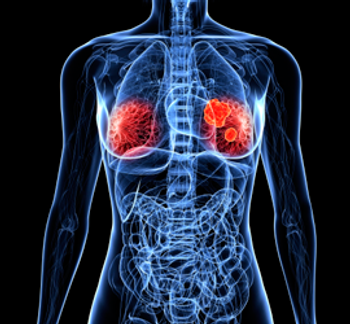
Miami Breast Cancer Conference® Abstracts Supplement
- 42nd Annual Miami Breast Cancer Conference® - Abstracts
- Volume 39
- Issue 4
- Pages: 54-55
71 Beyond the Surface: Suspicious Nipple Lesions
Background/Significance
Nipple lesions, often subtle and easily overlooked, can represent early signs of malignancy, which should prompt pathologic evaluation. These reports highlight the importance of heightened visual interpretation for timely diagnosis and treatment.
Materials and Methods
Cases from a breast surgery tertiary referral hospital illustrate suspicious nipple lesions in 1 male and 4 female individuals.
Results
Case 1: A 46-year-old woman presented with 6 months of painful, spontaneous milky discharge in the left breast with an associated 5-mm yellow nipple scab. Breast mammogram and ultrasound were benign. Shave biopsy revealed breast primary adenocarcinoma. MRI showed diffuse enhancement with nipple-areola complex (NAC) retraction. Lumpectomy confirmed invasive ductal carcinoma (IDC).
Case 2: A 61-year-old woman with persistent right nipple itching, scaling, shape deviation, hyperpigmentation, and a palpable retroareolar mass. Breast imaging showed retroareolar intraductal mass. Final surgical pathology revealed ductal carcinoma in situ (DCIS) and Paget disease.
Case 3: A 70-year-old man with an enlarging verrucous, pruritic left nipple lesion with an associated palpable retroareolar mass. Breast mammogram revealed a 2.6-cm mass, which extended to the nipple, with enlarged ipsilateral axillary lymph nodes. Biopsy confirmed IDC.
Case 4: A 63-year-old woman with right nipple inversion, hyperpigmentation, crusting, and a palpable mass. History of papillary carcinoma resected with clear margins 10 years ago. Ultrasound showed central right breast mass. Ultrasound-guided biopsy revealed atypical ductal hyperplasia. Nipple punch biopsy revealed papillary carcinoma. Mastectomy with sentinel node evaluation confirmed IDC with negative nodes.
Case 5: A 36-year-old woman with a 3-year history of bilateral areolar skin thickening and hyperpigmentation. No scaling, discharge, or pruritus. Bleeding occurred when a lesion was scratched. Breast imaging was benign. Punch biopsy revealed hyperkeratosis of the NAC and possible correlation with T-cell lymphoma.
Conclusion
Meticulous examination of nipple abnormalities is critical in early detection. Clinicians must maintain a high index of suspicion and consider tissue diagnosis for concerning nipple changes.
Articles in this issue
Newsletter
Stay up to date on recent advances in the multidisciplinary approach to cancer.





















































































